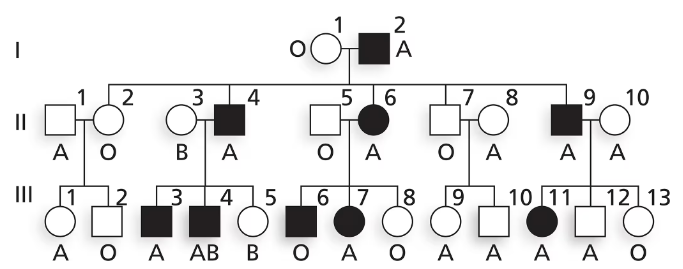Here are the essential concepts you must grasp in order to answer the question correctly.
Autosomal Dominant Inheritance
Nail-patella syndrome is inherited in an autosomal dominant manner, meaning that only one copy of the mutated gene from an affected parent can cause the disorder. This type of inheritance typically results in the condition being expressed in every generation, and both males and females are equally likely to be affected. Understanding this pattern is crucial for determining the genotypes of individuals in the pedigree.
Recommended video:
Genotype and Phenotype
The genotype refers to the genetic constitution of an individual, while the phenotype is the observable physical or biochemical characteristics. In the case of nail-patella syndrome, an individual with at least one dominant allele (N) will exhibit the syndrome, while those with two recessive alleles (nn) will not. Identifying the genotypes of III-11 and III-12 helps clarify why one has the syndrome and the other does not.
Recommended video:
Pedigree Analysis
Pedigree analysis is a diagrammatic method used to trace the inheritance of traits through generations in a family. By examining the pedigree provided, one can determine the relationships between individuals and infer their genotypes based on the presence or absence of the syndrome. This analysis is essential for understanding how the trait is passed down and for predicting the likelihood of occurrence in future generations.
Recommended video:







